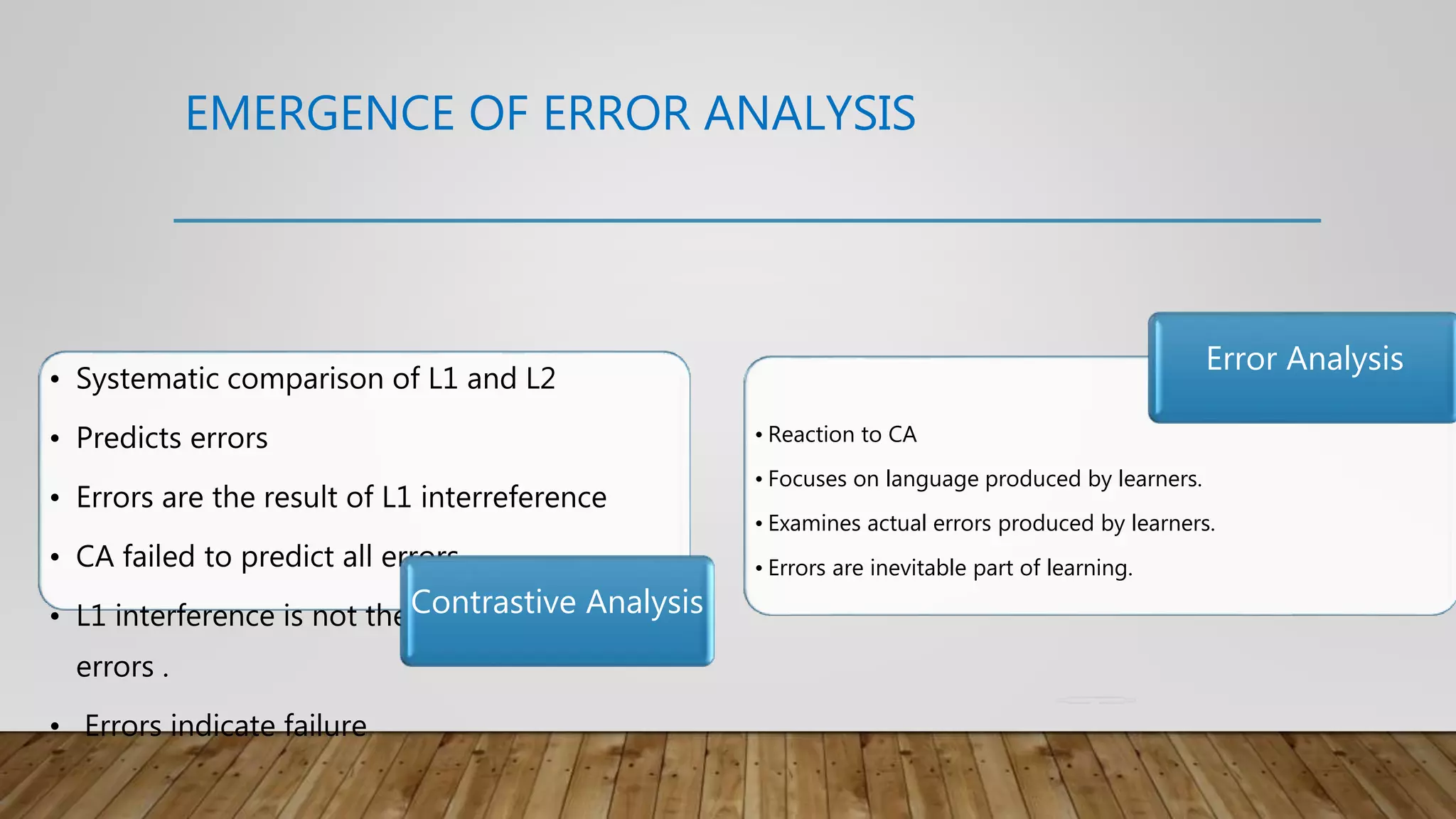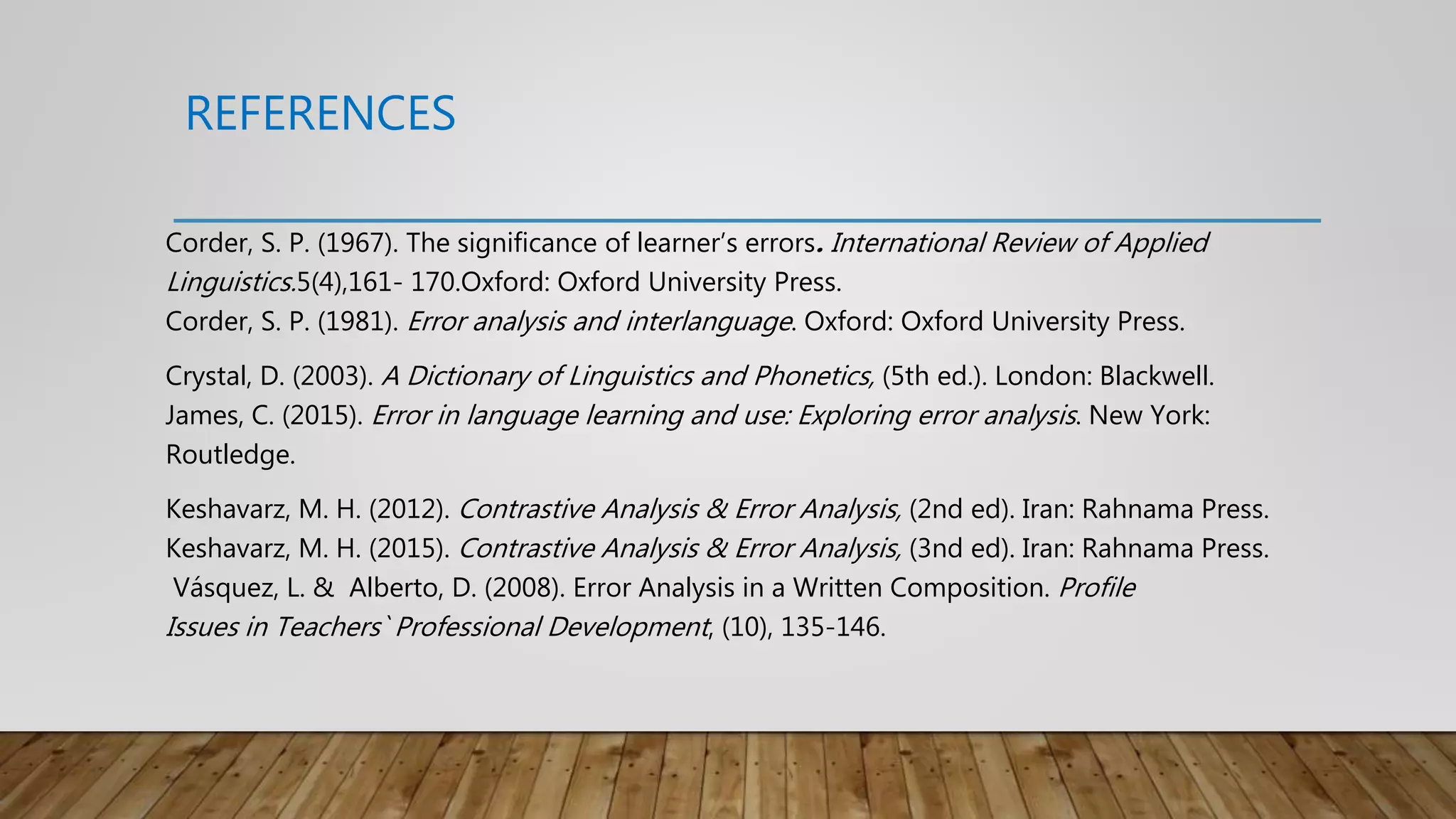The document provides a comprehensive overview of error analysis in second language acquisition, detailing its significance, methodologies, and the distinctions between errors and mistakes. It outlines various sources of errors, discusses the error analysis process, and highlights the assumptions and limitations of the approach. Overall, it stresses the importance of error analysis as a pedagogical tool for language teaching and learning.



















